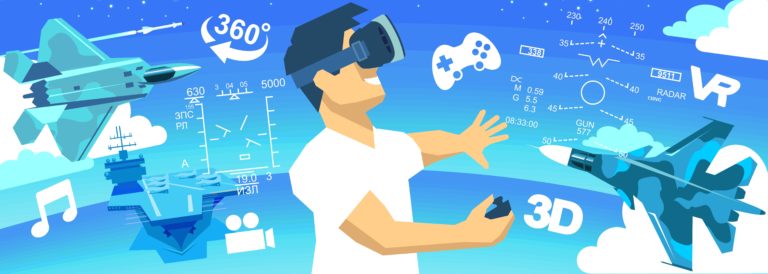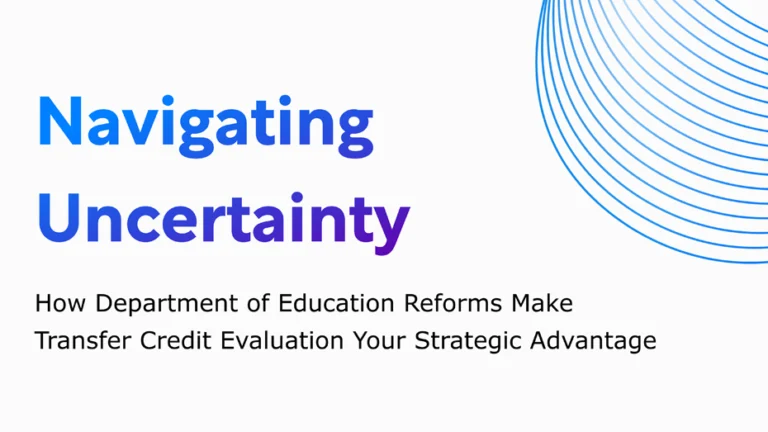Education has long been a measure of societal success, status, and a gateway to opportunity. In the era of digital transformation, people can finally leverage all kinds of technologies to develop new ways of learning. Virtual reality offers immersive learning that mimics the real world through augmentation.
In this article, we will show how VR can transform the way learning is delivered.
Immersive experiences
VR was the term given to explain the concept of virtual reality by computer engineers. Through a computer-generated virtual environment, our senses are being stimulated by what is called “reality emulation.” It is through this sensory experience that the possibilities for improved learning are endless.
Contrary to popular belief, the beginnings of virtual reality started in the 1950s. An understated genius way beyond his years was Morton Heiling. Heiling, a scientist during the Cold War, invented the 3D video machine that would simulate riding a motorcycle. His creation was called “Sensorama Simulator,” a total bust.
While Heiling’s invention may have failed, his line of thinking had a profound effect on the VR and AR (augmented reality) industry today. Flash forward nearly 65 years later and VR actually works. Facebook purchased Oculus Rift, now known as Oculus VR, for a whopping $2 billion.
Virtual reality offers a new training experience that caters to today’s learners. Younger generations are now digitally native, totally raised on electronic experiences. The interactive 360-degree training that VR provides delivers on the expectations of Millennials and Generation Z. VR looks and feels like a game, with the gamification of learning brings a whole new level of intensity and depth to the experience.
Thanks to the unlocked potential in this tech, enterprise VR budgets are expected to explode in the next year. The global VR software and hardware market is expected to hit $40 billion by 2020. Companies like Google are already working on VR devices and experiences behind the scenes for entertainment. But VR isn’t just for social media or even just gaming. Behind gaming, education is the next greatest sector to be transformed by VR.
Better learning
Traditional teaching methods rely on text, lectures, audio, and video, but research shows that most people learn kinesthetically, attributing 70 percent of knowledge to experiential learning. True change is behavioral, and VR drives this by strengthening the brain’s neurological connections that result in changed behavior.
There are many examples of how virtual reality helps learning and vocational training. Some use case include:
- Education. There are dozens of companies working to reinvent the way education is taught and delivered. Some include Google with Expeditions, technology that allows teachers to act as guides for expeditions around the world. Distance Education and Learning Technology Applications (DELTA) at NC State University is using VR in its BIO 181 course to immerse students in field-based experiences. Alchemy VR is designed for breathtaking storytelling, engaging young readers in a way never possible before.
- Medicine. Doctors and nurses can train how to react in the best way and make decisions fast with real-life emergency scenarios. For emergency response, learning how to engage and interact with all possible outcomes enables paramedics and rescue teams to be ready in case of an emergency.
- Military. The battlefield is made of many moving parts: humans, gear, ammo, and vehicles. These are all expensive, especially when a country is preparing for war. VR can be a cost-effective way to help members learn tactical responses in the best interest of greater strategy, without the cost of human blood.
- Aviation. Pilots have to undergo specific requirements to learn how to operate planes under serious weather conditions, or even in combat (as seen in the military). Moreover, assembly workers can reduce inspection time by using 3D aircraft models instead of relying on the finished product. Drone pilots also train using VR.
- Auto. VR is applied in the automobile industry to test the look, feel, and performance of various parts. This greatly saves time for constructing a prototype, along with money lost in the manufacturing process. Racing teams in Formula 1 also use VR to train for major racing events with near-perfect track simulation.
- Crime. Hostages, armed robberies, and terrorism situations require teams to respond quickly and efficiently. VR can help law enforcement personnel to react appropriately in times of crisis.
Many segments involve dangerous or risky work performed by employees, teams, students, or government personnel. With VR, these trainees can gain valuable skills in intensive environments that mitigate risk of injury on the job, making for much safer learning experiences.
For education in particular, VR is making faster strides than these industries listed above. For example, Discovery Education delivers VR field trips for students focusing on health, aerospace, agriculture tech, and more.
So what is better for learning: real world or virtual reality? The answer is completely dependent on the sector, the training requirement, and the nature of the skills to be learned. For personnel in these sectors, VR could offer an extremely realistic opportunity to learn in a way that simply wasn’t available ten years ago.
Working together better
No matter what the size, enterprises struggle with scaling on-the-job training quick enough to keep up with industry demands. A recent report by Deloitte revealed the C-suite believes learning is listed as the number one top priority at a company, with 84% of respondents stating the need to rethink the employee experience (EX) to improve productivity.
Businesses like Walmart and even organizations like the NFL already use VR to train teams. These organizations developed immersive modules that mimic expensive ways of training normally deemed out of reach for a much cheaper investment. This has allowed participants to train in a way that is repeatable, accessible, and scalable at a fraction of the cost.
For example, according to ExxonMobil, their company is using VR for safety training. Immersive simulations can transport VR users onto the loading dock of a liquified natural gas tanker, where they spend a day on the job assessing and reacting to different scenarios.
As a result of VR training, there is also growth in soft skills. Empathy, communication, and learning how to interact in a team environment are skills seen as valuable in the eyes of coaches and employers alike. People learn how to interact better with others and in turn, perform better. This leads to an increase in positive ROI on the business level.
“People learn best by doing, and as we’ve seen with customers like Walmart, Verizon, and Fidelity, broad-scale adoption of VR-based learning is happening today and can make a significant impact on employee engagement, retention, and performance,” shares Derek Belch, CEO of Strivr, with Tech@Facebook.
The benefits of VR at work are increasingly clear. For many, it’s simply a question of how to get started.
Are you looking to digitally transform your educational experience? Our enterprise software solution specializes in delivering solutions that drive business efficiency for learning environments. Check out our robust low-code workflow management platform at www.processmaker.com.
About ProcessMaker
ProcessMaker is a low-code business process management and workflow software. ProcessMaker makes it easy for business analysts to collaborate with IT to automate complex business processes connecting people and existing company systems. Headquartered in Durham, North Carolina in the United States, ProcessMaker has a partner network spread across 35 countries on five continents. Hundreds of commercial customers, including many Fortune 100 companies, rely on ProcessMaker to digitally transform their core business processes enabling faster decision making, improved compliance, and better performance.





